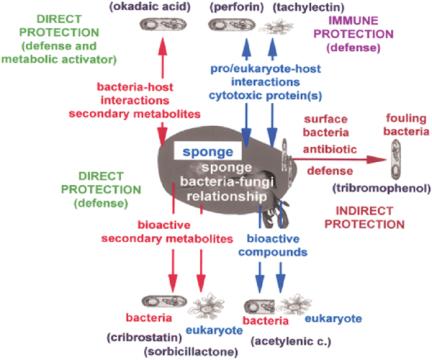Figure 2.
Strategies of sponges, together with their symbiotic microorganisms, bacteria and fungi, for protection against attackers. Sponges are provided with two forms of direct protections; (i) single protection and (ii) dual protection. In single protection, bioactive molecules are produced which are directed only toward the invading pro- and eukaryotic organisms. In the dual form of protection, the secondary metabolites are directed against the non-self organisms and also positively modulate the host metabolism. (iii) The sponges produce defense proteins that neutralize/kill foreign prokaryotic pathogenic microorganisms and eukaryotic predators (immune protection). (iv) The sponges facultatively comprise surface bacteria that produce antifouling secondary metabolites (indirect protection). The red arrows indicate bacterial origin, and the blue ones indicate that the compounds are produced by sponges. Examples of secondary metabolites and proteins involved in these strategies of protection are provided.

